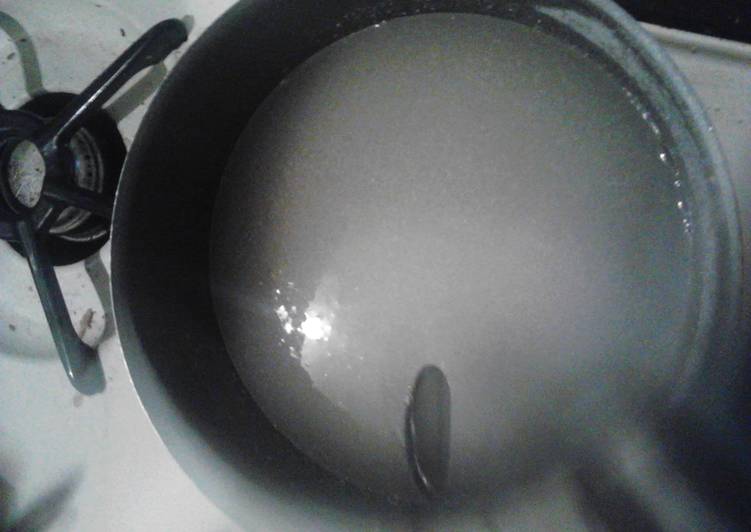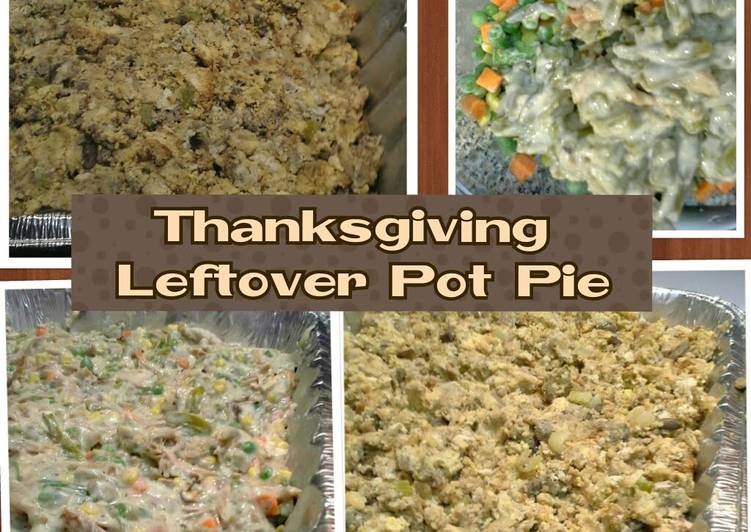
Hey everyone, it is me, Dave, welcome to our recipe page. Today, we’re going to make a distinctive dish, reba's guide to successful candy making. It is one of my favorites food recipes. This time, I will make it a little bit unique. This is gonna smell and look delicious.
Trading candy is a skill that can greatly improve the quality of your candy stash. However be warned there are rules and regulations. Watch this video to hone your candy trading skills.
Reba's guide to successful candy making is one of the most well liked of recent trending foods in the world. It is enjoyed by millions daily. It is easy, it is quick, it tastes yummy. They’re nice and they look fantastic. Reba's guide to successful candy making is something that I have loved my whole life.
To get started with this recipe, we have to prepare a few ingredients. You can cook reba's guide to successful candy making using 6 ingredients and 28 steps. Here is how you can achieve it.
The ingredients needed to make Reba's guide to successful candy making:
- Get basic equipment
- Get 1 candy thermometer
- Prepare 1 stainless steel pot or any old pot you choose to sacrifice but it NEEDS to be at least a quart
- Prepare 1 cup very cold water ( for testing)
- Get 1 appropriate measuring equipment i.e. dry measures for dry ingredients, wet for wet ingredients
- Prepare 1 any other specialty aids, like egg seperators double boilers etc.
Making candy at home can feel intimidating, but we're here to help you with our most trusted techniques and tips to pull off any recipe with great success. FREE Desserts Cookbook Looking to make the best desserts ever? Sign up for our newsletter and get our cookbook! Before baking any candy, make sure the sugar has had time to dry out for a few hours in an air-tight container.
Steps to make Reba's guide to successful candy making:
- Most people don't realize that there IS a RIGHT time and a WRONG time for candy making. If you're making a high gloss candy, like fudge, for example and its a very hot dry day outside; chances are it won't set. - - https://cookpad.com/us/recipes/367254-fairy-food
- To minimize your chances of failure poke your head outside. Is it too dry for the style of candy? Too wet? How can you tell?
- The BEST answers to these questions are to keep in mind that high-gloss candies, like fudge, taffy and some brittles and toffees LIKE an atmosphere that is wetter than average. Is it partly sunny? Is the air damp without feeling clammy? Then chances are a candy within these styles will turn out just fine.
- On the other hand, a bright sunny day where the air is really dry is PERFECT for things like peppermint patties which need to dry for a day or so before you finish making them. Doughy candies like this NEED those dry conditions to be successful.
- So now that we've established the right kind of conditions for our candy making, lets talk ingredients. Do you have the correct kind of sugar(s) your recipe calls for? Do you have ENOUGH? Do you have the rest of the ingredients? Do you have all the equipment? Can you improvise with a microwave?
- Most little to no cooking candies CAN be made in a microwave. These are candies that stay soft, or are chewy. These are candies that are cooked to what is known as the soft ball stage.
- Wait, what? What is this stage crap all of a sudden? Candy has STAGES???
- Yes it does. And I'm going to take ALL your anxiety away by telling you about them! There are TECHNICALLY 4 but MOST people only know three: soft ball, firm ball, hard ball. The final one is called the hard crack stage and is my favorite but I'M a huge fan of jawbreakers lol.
- So first off, how do we define these stages of candy firmness? By their texture and appearance. Most candy making is simple science which is why many people struggle with it. The SAFEST COURSE in determining at what stage your candy is at is by using a candy thermometer.
- But, if you're like me and too cheap to invest in one, or you can't find one, you can use the COLD WATER TEST. The cold water test is where a small amount of your candy's syrup is dropped into a cup of VERY COLD water.
- Soft Ball stage: this is the fastest stage to achieve and ALSO TRICKIEST to hit. If you're only going to soft ball you need to practice recognizing the stages on a candy with a longer cook time first. My Fairy Food recipe is an EXCELLENT beginner recipe because it's cooked to hard crack stage.
- So, soft ball stage is reached when a drop of mixture forms a soft ball when dropped into cold water. But it doesn't hold its shape when removed. If it holds its shape you've overcooked and need to start over.
- So if you're beyond soft ball stage because your candy drop has maintained its shape but is beginning to flatten you've reached the FIRM BALL STAGE. Most truffle recipes are cooked to here as are peppermints and some taffies.
- Next after firm ball is the HARD BALL STAGE. This is where your test will form a chewy thread OR a firm ball that retains its shape without flattening out. Another popular stage for taffies and mints as well as assorted firm chewy candies.
- And finally, the HARD CRACK STAGE. This is the hardest stage of candy but the EASIEST to achieve. Its between 300-310 degrees on your thermometer OR your strand is hard, brittle and very rigid. It also tends to crack if you shape it into a ball and expose it to air, hence its name.
- So now you know about weather and how it effects your candy. You've learned the 4 stages candy is cooked to and how to recognize them. Let's discuss one last thing and then you'll be on your way to being a candy pro: dishes.
- The MOST IMPORTANT THING NO MATTER HOW YOUR RECIPE PHRASES IT- BUTTERING YOUR COOLING DISH. Make sure you pick something that is sized appropriately for your FINISHED product.
- Then make sure you spread butter over EVERY SINGLE PLACE YOUR CANDY WILL TOUCH ON THAT SUCKER. Some recipes will have different directions, usually pulled or molded candies like taffies or pulled mints.
- If your recipe has different instructions: FOLLOW THEM EXACTLY. Many a batch of candy fails because people FAIL TO FOLLOW INSTRUCTIONS.
- So make sure you READ YOUR RECIPE THOROUGHLY BEFORE YOU ATTEMPT TO COOK IT.
- GATHER UP EVERYTHING YOU NEED AND HAVE IT HANDY.
- And FOLLOW THE RECIPE. These tips will aid you in achieving your candy making AND overall cooking goals. I thank you for reading my little guide to candy success and hope to share many more candy recipes with you. Happy cooking!
- And I apologize, I forgot to talk about COOLING YOUR CANDY. My bad :)
- So cooling. Sounds easy right? Just chuck it in the fridge? WRONG. The VERY first mistake I ever made was putting my first batch of fudge into the fridge to cool.
- You may wonder why this is a mistake. The explanation I was given from a family friend who was a chocolatier is that the cooling in the refrigerator causes your lovely sugar crystals to collapse, which will lead to your candy melting when you leave it on the counter too long.
- The best way to cool ANY candy, unless your recipe SPECIFICALLY says otherwise of course, is to just let it sit out at room temperature until its completely cooled and set. Then its safe to refrigerate. And I HAVE seen recipes for refrigerator fudge so I know they're out there lol.
- And finally clean up. Most messes, no matter how sticky your recipe, can be cleaned just by putting hot water immediately into the pan after pouring. That super sticky fairy food recipe? I'd FORGOTTEN this trick so imagine my surprise when I went to wash the pot I cooked it in and it looked CLEAN. Lol. And if you ever drop a lemon custard, or any other cornstarch based filling in fluffy or Fido, combing cornstarch through their fur will clean them right up! (Grandma dropped lemon filling on grandpa's cat once, the vet gave me the solution to desticking the poor cat)
- NOW I'm pretty sure I've covered it all. ENJOY COOKING!!!
Get the right equipment In order to make candy, you need more than properly baked sugar and candy; there is also the proper equipment. Candy Making Tips from a Real Chocolatier. Chocolate is a decadent dessert that has been around for centuries! While it may be readily available today at grocery stores and even gas stations, there's a big difference between prepackaged products and artisanal chocolate candies. Whether you're new to candy making, or an old pro at it, you'll find a lot of advice (and maybe some controversy) about just which tools to use for making your sweet treats.
So that’s going to wrap it up for this exceptional food reba's guide to successful candy making recipe. Thanks so much for reading. I am sure that you can make this at home. There’s gonna be interesting food in home recipes coming up. Remember to bookmark this page in your browser, and share it to your family, colleague and friends. Thanks again for reading. Go on get cooking!


